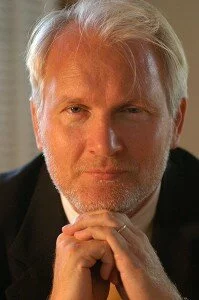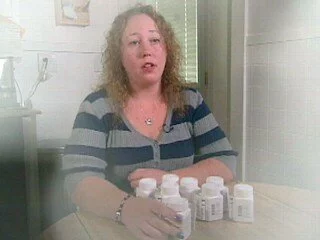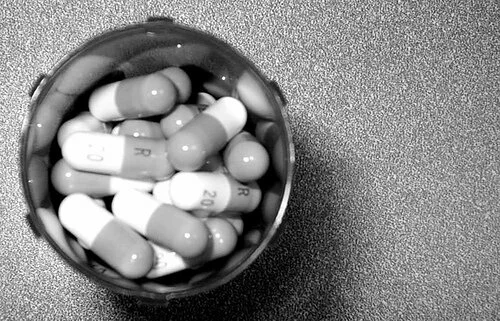 Healthcare reform isn’t just about the public option and paying for doctor’s visits — it’s also about equal, affordable access to life-saving medications for all Americans. That’s why many Big Pharma watchdogs are so disappointed with a recent amendment slipped into healthcare legislation that proposes extending patent protection on biologic drugs, delaying for years the public’s access to affordable follow-on versions.
Healthcare reform isn’t just about the public option and paying for doctor’s visits — it’s also about equal, affordable access to life-saving medications for all Americans. That’s why many Big Pharma watchdogs are so disappointed with a recent amendment slipped into healthcare legislation that proposes extending patent protection on biologic drugs, delaying for years the public’s access to affordable follow-on versions.
What are “biologics� They’re the next big wave in medicine — drugs made not from simple chemical formulations, but from biological components. They’re very expensive, and poised for enormous success:
By 2014, the biggest-selling meds will be biologics, according to an analysis from Evaluate Pharma. Taking the place of Pfizer’s gargantuan drug Lipitor will be Roche’s Avastin, a cancer med expected to account for $9.23 billion in 2014 sales. (Even when you factor in the recent trial disappointments.) The next five top sellers, in order, are expected to be Humira (Abbott Labs), Rituxan (Roche), Enbrel (Wyeth/Amgen), Lantus (Sanofi-Aventis), and Herceptin (also Roche).
Evaluate also predicts that half of the top 100 drugs in 2014 will be biotech meds — a huge change from last year’s level of 28 percent and 11 percent in 2000.
Because biologics are so complex, the system we all know — where patented brand names enjoy a period of exclusivity, then eventually make way to cheaper generics — doesn’t translate perfectly. Biologic “generics†are called “biosimilars,†and they are not seen as generic equivalents. They must be submitted for approvals as new drugs and do their own clinical trials, etc.Â
The Eshoo-Barton amendment, named for sponsoring Representatives Anna Eshoo (D – Calif.) and Joe Barton (R – Texas), would give brand-name biologic drugmakers 12 years of market exclusivity. By comparison, President Obama favors seven years, and Rep. Henry Waxman (D –Calif.) feels that the public should have access to “generic†biologics after just five years. By contrast, says Medical News Today, “The Biotechnology Industry Organization maintains that there should be a minimum 14 years of exclusivity to account for a development process that on average takes 10 years and $1.2 billion for a product to reach market.â€
5, 7, 12, or 14 years? As you can see, there is a real difference of opinion on this subject. One person who has written extensively on this is author James Love on the Huffington Post. Here he explains why this amendment is harmful:
The Eshoo/Barton amendment, which has the support of many newly pro-PhRMA democrats, will extend the period of monopolies for biologic medicines, when compared to the original Waxman text. The only question is how long. Part of the harm will be the longer period prohibiting generic suppliers from relying upon evidence that medicines are safe and provide therapeutic benefits. Much of the other harm will come from a number of technical changes in the bill that make it much easier for incumbent firms to block entry through technical issues, extended litigation, and ever-greening of protection from small medically unimportant changes in protected medicines.
This is essentially a case of innovation versus access. Drug companies want protection from the risks and costs borne in the creation and testing of new drugs; patient advocates say that Big Pharma (or Big Biotech, if you like) already make large profits and that the public deserves access to affordable biosimilars in a more timely fashion. “Entities that support longer periods of exclusivity — such as universities, biotech companies and venture capitalists — are ‘fighting to protect inventors’ rights and ensure more thorough clinical trials.’ On the other side, consumer groups, labor unions, insurers and generic drug manufacturers ‘see shorter exclusivity as the way to deliver safe, affordable and quality drugs to patients and open the marketplace to increased competition,’†explains Medical News Today.
The latest high-emotion development is blogger Jane Hamsher’s “Are You Or Someone You Know Paying $50,000 A Year For Drugs?†It paints an ugly picture of what happens to people who cannot affording life-saving biologics. A few days later, Rep. Eshoo responded to this and other online attention with a blog post on The Hill’s Congress Blog titled “Setting the record straight on our health care legislation.†If you check in with these two articles, you’ll have the latest from both side of the “biologic generics” debate.
Our mission, as always, at EDrugSearch.com is to improve the American public’s access to safe, quality medications at an affordable cost.
For more information:
- Should We Be OK With The PhRMA Deal With White House?
- US House Panel Backs Exclusivity for Biologic Drugs
- Pay or die: Deadly Pharma amendment in HCR going right under radar

Despite celebrity endorsements courtesy of Photoshop (above), and a real endorsement by eDrugSearch.com and others, Pfizer whistleblower Dr. Peter Rost came up short in his bid to become the next FDA commissioner. President Obama on Saturday announced the selection of Dr. Margaret Hamburg for the top food and drug post.
We knew Peter was a longshot for the post, but what the heck — it was worth a shot.
The good news is that Dr. Hamburg will bring a passion for and history of reform to an agency that needs it desperately.
For Americans under 30, it might surprise you to know that the FDA has not always been a public laughingstock. In fact, in the 1970s, it earned a public confidence rating of 80 percent — among the highest of all government entities. That rating has now dropped to less than 40 percent, making it one of our least trusted federal agencies.
It’s not difficult to track this decline.
During the Reagan presidency, the FDA’s staff was slashed by 30 percent. It was cut even more in the ’90s, when Newt Gingrich led a pogrom against the agency, effectively arguing that private businesses could police themselves. This “starve the beast” mentality continued under George W. Bush. From 1994 to 2007, the agency staff was chopped from 9,167 to 7,856.
Ironically, the whole anti-FDA movement started with President Reagan’s claims that the agency was effectively “murdering†Americans by spending too long approving needed drugs.
Of course, cutting agency personnel by 30 percent doesn’t necessarily speed things along; it just spreads agency resources more thinly, so that more mistakes are made, the agency gets blamed, and more resources are cut to punish the agency as a result.
And so finally, the FDA reached a breaking point — and we’ve seen an across-the-board meltdown over the past few years, both with food safety and drug safety.
President Obama clearly wants to turn the ship around, back in the right direction. Here’s a brief video in which he outlines his plans for the FDA:
- An Unfortunate Victory for EU Repackagers (Drug Channels)
- Valeant buys Dow in $285M deal (Fierce Biotech)
- New PhRMA DTC Guidelines Ignore Elephant in Room: Moratorium (Pharma Marketing Blog)
- Pharma Trade Group Has New DTC Guidelines (Pharmalot)
Subscribe to the eDrugSearch Blog with Bloglines:

The Day of New London, Conn., has a nice article on Dr. Peter Rost’s bid for FDA commissioner. Here’s an excerpt referencing our interview with Peter:
If Pfizer Inc. were to describe its worst nightmare, it might very well be seeing former company whistleblower Peter Rost become commissioner of the U.S. Food and Drug Administration.
So guess who is actively seeking the FDA’s top post?…
Rost said he is looking for a shakeup of the FDA, including a reorienting of the agency’s priorities from serving the drug industry to helping American citizens.
â€That means the agency would focus not only on the fastest and most efficient processing of new drug applications, but would also ensure that unsafe drugs are taken off the market or labeling (is) revised in a more timely manner,†Rost said in an interview this week with eDrugSearch. com, which endorsed his candidacy.
Some of Rost’s most controversial stances include his views on reimportation of drugs from Canada, which he approves, and his opposition to direct-to-consumer advertising.
â€DTC advertising is not part of a ‘free market’ – it is part of manipulation of consumers who don’t know better and doctors who give the patient whatever they ask for,†Rost said.
 It should come as no surprise to readers of this blog that we are delighted about the prospect of a new FDA commissioner in 2009 — one who we hope will put the interests of the people above those of large pharmaceutical companies.
It should come as no surprise to readers of this blog that we are delighted about the prospect of a new FDA commissioner in 2009 — one who we hope will put the interests of the people above those of large pharmaceutical companies.
We have also been pleasantly surprised to see the groundswell of public support for Pfizer whistleblower Dr. Peter Rost for the FDA’s top job. A clear industry outsider like Dr. Rost might seem a longshot to ultimately win the job — but then again, Obama was a longshot to win the presidency. And there are these three hopeful signs:
1. Dr. Rost is blowing away the competition in the voting at John Mack’s influential Pharma Marketing Blog. (Vote here.)
2. President-elect Obama’s chief of staff is a big fan of Dr. Rost.
3. Dr. Rost himself has jumped on the bandwagon, renaming his blog “Peter Rost for FDA Commissioner”!
Today, eDrugSearch.com officially endorses Peter Rost for FDA commissioner. We think he would bring the changes the agency so desperately needs.
On the occasion of our endorsement, Dr. Rost agreed to answer a few questions about how he would handle the commissioner’s job. He has some insightful comments on topics ranging from Canadian drugs to DTC advertising. Enjoy —
eDrugSearch.com: In the 1970s, the FDA had one of the highest public approval ratings among government agencies. Today, the agency’s reputation is a mess. What went wrong?
Dr. Rost: Same reason Wall Street’s reputation used to be great and is now a mess; they screwed up. The FDA is there to protect the public health, both by approving life-saving drugs and taking dangerous drugs off the market. They got too focused on approval and lost out on protecting the public against dangerous drugs (i.e. Vioxx); as a result we’ve had a number of scandals when the FDA has been perceived as being way behind the eightball.
eDrugSearch.com: What are the first three actions you would take as FDA commissioner, and why?
Dr. Rost: It is really impossible to answer without first having had a chance to evaluate the agency from the inside. In general terms, however, I’d like to reorient the FDA to focus on its primary customers . . . American citizens, instead of primarily serving the drug industry. That means the agency would focus not only on the fastest and most efficient processing of new drug applications, but would also ensure that unsafe drugs are taken off the market or labeling revised in a more timely manner. Both these objectives should be equally important.
I would also want to ensure that hundreds of unapproved drugs that are sold illegally as prescription drugs would be taken off the market, and that reimportation of drugs would become legal and regulated and appropriate safety measures taken to protect the public.
Finally, I’d want to bring the kind of internal and external accountability that normally exist within private corporations to a government agency and work for limitation of direct-to-consumer advertising, which is counter productive to efficient healthcare.
eDrugSearch.com: Are there concrete steps the FDA commissioner can take — directly or indirectly — to help reduce the cost of prescription drugs for American consumers? If so, what are these steps and how would they impact drug prices?
Dr. Rost: Support legalized and regulated reimportation of drugs, which would increase price pressure.
eDrugSearch.com: What is your view of the Wyeth v. Levine case? How do you believe the Supreme Court should rule and why?
Dr. Rost: My view is that no government agency, including the FDA, should be considered the equivalent of “God.” An FDA decision or lack of decision shouldn’t preempt a legal challenge and an FDA decision or lack of decision shouldn’t be used as a legal shield. The FDA doesn’t know everything, doesn’t have all information, only what it receives from drug companies and doctors . . . quite frankly, a decision in favor of preemption would be a disaster for American consumers.
eDrugSearch.com: What should the FDA do about direct-to-consumer drug advertising? Is there a role for consumer advertising of prescription medications — and if so, what should that role be?
Dr. Rost: I used to be in favor of DTC and a “free market” but a free market requires informed consumers. Most of them don’t have medical degrees; hence, most of them are not qualified to judge and make decisions based on DTC advertising and, hence, DTC advertising is not part of a “free market” — it is part of manipulation of consumers who don’t know better and doctors who give the patient whatever they ask for. DTC advertising is not in the best interest of evidence-based healthcare or the American consumer.
eDrugSearch.com: Are there ways the FDA can leverage Health 2.0 and other technologies to do its job better?
Dr. Rost: Yes. We are still in the Stone Age when it comes to optimizing use of eHealth, sharing information and medical collaboration and education. Too big a topic to get into detail.
eDrugSearch.com: What would you do as FDA commissioner regarding Canadian drug reimportation?
Dr. Rost: I’m in favor of regulated and legalized reimportation with access to these drugs through regular brick and mortar pharmacies. Today we have a very dangerous system, the Wild West. We need to protect consumers from illegal and misbranded drugs sold by Internet pharmacies. The only way to do it is to legalize and regulate this trade.
eDrugSearch.com: President-elect Obama has been a vocal advocate of Canadian drug reimportation. Apparently in response, Big Pharma and its proxies have been waging a renewed battle against reimportation in the media. Specifically, opponents of reimportation make the case that the FDA lacks the necessary staff and other resources to effectively regulate drugs coming in from Canada. What do you think of this argument?
Dr. Rost: That’s BS, like most of what Big Pharma has been saying in respect to reimportation. In Europe this has been done for 20 years with no major staffing issues.
eDrugSearch.com: Opponents of drug reimportation also claim that drugs coming into the United States from Canada do not meet the same standards as the drugs dispensed to Canadian residents. What do you think of this argument? Can we trust the Canadian government’s licensing procedures to protect the safety of U.S. consumers? What should be the FDA’s role in this issue?
Dr. Rost: Untrue. We can trust both Canada and Europe, since they use drugs from the same manufacturers and have stringent approval procedures. In fact, drugs from these countries may be safer than U.S. drugs, since we have a completely fragmented, state-based system regulating drug trade and wholesalers with lots of entry points for counterfeit drugs. The FDA’s role should be the same as for any other drug, ensuring safety of the drug supply.
eDrugSearch.com: eDrugSearch.com is delighted to endorse you for FDA commissioner! Any final thoughts for our readers?
Dr. Rost: Well, if Obama really is looking for CHANGE what better way to do this than to appoint a candidate who has already shaken up the drug industry?
In the end, we need an FDA accountable to the public, ensuring not only availability of life-saving drugs but also better protecting us against dangerous drugs.
We’ve had enough of tainted advisory boards and people who scratch each others backs, I think I could bring in some fresh air and sunlight.
The FDA is never going to be perfect, but we can all agree that this is one government agency which could do a lot better. The American public deserves better and so do all the great FDA staffers. I don’t think FDA employees are the problem, I think the issue we’ve had is a lack of leadership at the top and we need to bring in someone who has the guts to do what it takes and the vision to know that nothing is ever impossible.
- Sun Pharma buys US-based narcotic maker (WSJ)
- Pharma Updates And What You Need To Know (Pharma’s Market)
- Will A Big Pharma Pusher Come To The Big Screen? (Pharmalot)
- Frost & Sullivan: Will Big Pharma Embrace its Orphans? (BioNity.com)
Subscribe to the eDrugSearch Blog with Bloglines:

- Grim Outlook for Big Pharma on Capitol Hill (Health Guide)
- Big Pharma’s Pills Contaminated with Machine Parts at Pill Factories (OEN)
- Highest-Yielding Big Pharma Stocks (StockPickr)
- J&J Health Media Acquisition is Bellwether for Future Pharma Wellness Publisher Deals (Health Content Advisors)
Subscribe to the eDrugSearch Blog with Bloglines:

One of the biggest advantages of shopping for prescription drugs online is price transparency, which empowers the consumer to easily find the best price among available options.
As healthcare consumers well know, it is very difficult to comparison shop among brick-and-mortar pharmacies, because pharmacies typically don’t advertise their prices for prescription drugs (with the exception of the Wal-Mart generic drug program and similar programs, which generally include a list of covered drugs on the retailer’s Web site.)
Because it’s difficult to compare prices, particularly for expensive, brand-name drugs, most consumers buy at their corner drugstore, assuming the price isn’t much different from the next corner — or the other side of town. This simply isn’t the case. What’s worse, the disparities in pricing disproportionately affect poorer people.
According to a new study appearing in the Health Services Research journal:
Four of the most widely prescribed drugs in the United States can cost 15 percent more on average in the poorest neighborhoods of Florida, according to a study comparing retail pharmacy prices around the state. Part of the explanation is the high proportion of independent pharmacies in poor ZIP codes that charge the highest prices for Nexium, Advair, Plavix and azithromycin…
In contrast, the study shows that chain pharmacies are less expensive and less likely to vary their prices based on ZIP code. However, they are also less common in poorer areas. The authors noted that some independent pharmacies in poor neighborhoods did charge prices similar to chain pharmacies, but that issues such as health literacy, finances and transportation could limit consumers from shopping around…
Even small price increases have negative consequences, and two earlier studies found that the cost of prescription drugs discourages uninsured and poor people from filling their prescriptions. As a result of not controlling their health, they spend more time in emergency rooms.
The researcher behind the study concludes:
“Insuring the uninsured is a priority. However, uninsured people who pay retail prices for their medications and struggle with health care costs should not face higher prices because of where they live. Even though these variations are based on data from only one state, they deserve further investigation.â€
There are a number of good, money-saving prescription drug card programs out there, which eDrugSearch.com will tell you about in our upcoming e-book. But there are also some scams out there — which ABC investigated in this report. An excerpt:
More than 45 million Americans do not have prescription drug insurance. And some have turned to online prescription drug service companies that offer help getting prescription drugs inexpensively in exchange for a fee. Online companies promoting cheap prescription drugs may be misleading…
Without insurance, Andrea [Melnick] was left to try and get pricey epilepsy medications, which cost up to $800 a month, on her own. Andrea looked for help online and found a company called Select Care Benefits Network.
“It sounded perfect,” she said. “It says on their Web site you can get your drugs cheaper.” She said the company offered to get all her drugs for just $30 a month. Andrea paid the company a total of $365, but over the next 10 months, she received only one voucher for a two-month supply of one of her drugs…
According to the Better Business Bureau, when she complained, Andrea became only one of 111 people who filed complaints against the company. Brandon Todd, president of Select Care Benefits Network, told “Good Morning America” that he was “aware” of the complaints, but claimed the company completed its services.
The ABC report advised consumers to try the Partnership for Prescription Assistance (PPA), a program run by Big Pharma that helps people like Andrea, who meet income and other eligibility requirements. Andrea could have simply gone here to get started.
Unfortunately, as eDrugSearch.com members well know, most Americans without prescription drug insurance do not meet the requirements for PPA assistance.
I stumbled across this while reading Gawker: “Teen socialite” Peaches Geldof says the staff at the fashion magazine Nylon prefer prescription drugs over illegal drugs –
What’s the drug of choice at Nylon? “Klonopin.†Peaches was definitely the talky one. Why? “It’s just a very large prescription drug culture. 
This confirms our highly anecdotal evidence of Klonopin as a mini-trend for the creative underclass, maybe better than Xanax—not that our shrink is offering to prescribe us any despite repeated inquiries.
Klonopin, classified as a “sedative-hypnotic,” is prescribed for epilepsy, panic and anxiety disorders, restless legs syndrome and other medical conditions. Unfortunately, such drugs are too easily obtained by young people, who often start taking them by raiding their parents’ medicine cabinets.
As Ritch Wagner of Purdue Pharma (OxyContin), who educates medical professionals and law enforcement officials about the dangers of prescription drug abuse, describes the growing problem:
More prescription drugs are creeping up the list of the 20 most widely abused substances, Wagner said, including the painkiller hydrocodone and methadone, a narcotic commonly used to treat heroin addiction that is now used to treat pain.
Abusers are beginning to learn it can “be more advantageous” to use prescription drugs to get high than drugs such as meth, cocaine and heroin. They are easier to obtain, and people think they are safe because doctors prescribe them.
“In my day and age, it was how many of Dad’s beers we can sneak out of the fridge,” Wagner said. “Now, it’s how many pills can I get out of the medicine cabinet.”
Wagner said children are taking whatever pills they can get their hands on, throwing them into a bowl and taking a handful. They’re called punch-bowl or grab-bag parties.
I think what really struck me about these stories was Geldof’s use of the term “prescription drug culture.” I hadn’t heard the term before.
My immediate reaction was to compare it to the “drug culture” of the ’60s and early ’70s, which we relate to young people — specifically, “hippies.” But upon reflection, the “prescription drug culture” isn’t confined to the young in our country today. It’s pervasive.
It starts with the billions of dollars in advertising that pharmaceutical companies spend to get us to stock our medicine cabinets with drugs — drugs that we might or might not really need.
Before the recent advertising campaign, for example, I’m guessing you’d never even heard of restless legs syndrome — let alone gone to the doctor and asked for Klonopin or Mirapex. The medical use of drugs like Xanax and Prozac have gone through the roof among adults of all ages. And don’t you suspect the Viva Viagra! advertising campaign has made Viagra an object of curiosity not only among middle-aged men, but among teenage boys?
When a teenager’s parents, as well as all of his or her friends’ parents, are stocking the medicine cabinet with these drugs, don’t you think what happens next is almost inevitable?
So, how do we solve the problem? Frankly, as I’ve stated here before, I would put an end to direct-to-consumer advertising by pharmaceutical companies.
Others may disagree with this approach, and that’s fine. But however we get there, we need to reach a point where we don’t expect a “pill for every ill.” Because if you believe there’s a pill for every ill, it’s a short step to believe that prescription drugs are the answer for everything — including having a good time at a party.
-
Search Blog Posts
-
-
Trending Content
-

-
Blogroll
- Bullet Wisdom
- Christian Social Network
- DrugWonks.com
- Eye on FDA
- GoozNews
- Health 2.0
- In the Pipeline
- Jesus Christ Our King
- Kevin, M.D.
- Pharm Aid
- Pharma Marketing
- PharmaGossip
- Pharmalot
- San Antonio Asphalt
- San Antonio Life Insurance
- San Antonio Pressure Washing
- The Angry Pharmacist
- The Health Care Blog
- The Peter Rost Blog
- World Vision
-
Tags
big pharma Canadian drugs canadian pharmacies canadian pharmacy consumer reports craig newmark divine healing Drug costs drug prices Drug reimportation eDrugSearch.com FDA Fosamax Generic drugs healing scriptures Health 2.0 healthcare reform Hypertension Jehova Rophe Jesus Christ Lipitor Metformin miracles nabp online pharmacy dictionary online prescriptions osteoporosis peter rost Pharmacies pharmacists pharmacychecker pharmacy spam phrma Prescription drugs prescription medication Proverbs 3:5-8 reimportation relenza Roche saving money SSRI swine flu Tamiflu The Great Physician The Lord our Healer -
Archives
- June 2013
- May 2013
- April 2013
- March 2013
- February 2013
- January 2013
- August 2012
- July 2012
- June 2012
- April 2012
- March 2012
- February 2012
- January 2012
- November 2011
- June 2011
- August 2010
- July 2010
- June 2010
- May 2010
- April 2010
- March 2010
- February 2010
- January 2010
- November 2009
- October 2009
- September 2009
- August 2009
- July 2009
- June 2009
- May 2009
- April 2009
- March 2009
- February 2009
- January 2009
- December 2008
- November 2008
- October 2008
- September 2008
- August 2008
- July 2008
- June 2008
- May 2008
- April 2008
- March 2008
- February 2008
- January 2008
- December 2007
- November 2007
- October 2007
- September 2007
- August 2007
- July 2007
- June 2007
- May 2007
- April 2007
- March 2007
- February 2007
- January 2007
- December 2006
- November 2006
-
Recent Comments
- Ranee on What is the Difference Between Effexor and Cymbalta?
- bAnn805 on Crestor, Lipitor, or Zocor – Which statin is right for you?
- Anna Pham on Why is Medicine Cheaper in Canada?
- Anna Pham on How to Get the Cheapest Prescription Medications
- Anna Pham on How to Travel With Prescription Medication


